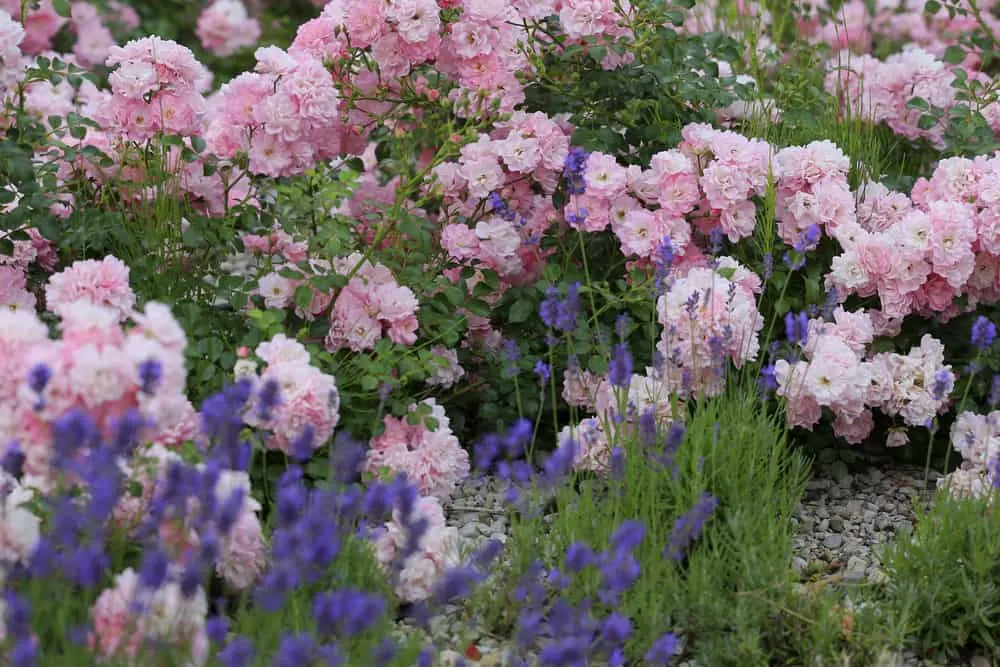Roses And Rosemary: The Perfect Companion Planting
Roses and rosemary are two of the most popular garden plants, and for good reason. They are both beautiful, fragrant, and relatively easy to care for. But did you know that they can also be beneficial to each other when planted together?
In this blog post, we will discuss the benefits of companion planting roses and rosemary, as well as some tips on how to do it successfully.
Benefits of Companion Planting Roses and Rosemary
There are several reasons why planting roses and rosemary together can be beneficial.
- Rosemary can repel pests and diseases. The strong, pungent scent of rosemary can deter a variety of pests, including aphids, spider mites, and whiteflies. It can also help to prevent fungal diseases such as black spot and powdery mildew.
- Rosemary can improve the growth of roses. Rosemary is a nitrogen-fixing plant, which means that it can help to add nitrogen to the soil. This can benefit roses, which are heavy feeders.
- Rosemary can attract beneficial insects. The flowers of rosemary are attractive to bees, butterflies, and other beneficial insects. These insects can help to pollinate roses and control pests.
- Rosemary and roses complement each other aesthetically. The blue-green foliage of rosemary provides a striking contrast to the bright colors of roses. The two plants can also be used to create a variety of different garden designs.
Tips for Companion Planting Roses and Rosemary
When companion planting roses and rosemary, there are a few things you should keep in mind.
- Plant rosemary in full sun. Rosemary needs at least six hours of direct sunlight per day. Roses can tolerate some shade, but they will flower better if they are planted in full sun.
- Plant rosemary in well-drained soil. Rosemary is a drought-tolerant plant, but it does not like wet feet. Make sure the soil you plant it in drains well.
- Space the plants properly. Roses and rosemary can grow quite large, so make sure to space them at least three feet apart.
- Water the plants regularly. Both roses and rosemary need regular watering, especially during hot, dry weather.
- Fertilize the plants regularly. Roses need to be fertilized regularly, especially during the growing season. Rosemary does not need to be fertilized as often, but it will benefit from a light application of fertilizer once a year.
Conclusion
Roses and rosemary are a beautiful and beneficial companion planting combination. By planting these two plants together, you can enjoy their beauty, fragrance, and pest- and disease-fighting benefits.
Roses and rosemary are two classic garden plants that are often planted together. They both have a Mediterranean origin and prefer similar growing conditions, such as full sun and well-drained soil. In addition, they can each benefit from the other's presence in the garden.
Rosemary is a fragrant herb that can help to repel pests, such as aphids and spider mites. It can also improve the flavor of roses, making them more fragrant and flavorful. Roses, on the other hand, can provide shade for rosemary, which can help to protect it from the hot sun.
If you are looking to plant roses and rosemary together in your garden, Gardenia Inspiration is a great resource for more information. The website provides a detailed guide on companion planting, including information on the benefits of planting roses and rosemary together. It also includes a list of other plants that can be planted with roses, as well as tips on how to care for your plants.
FAQ of roses and rosemary companion planting
- Are roses and rosemary good companion plants?
Yes, roses and rosemary are considered to be good companion plants. They have complementary growing requirements and can help each other to thrive. Roses need well-drained soil and full sun, while rosemary also prefers well-drained soil but can tolerate partial shade. Both plants are drought-tolerant and can help to attract beneficial insects to the garden.
- What are the benefits of companion planting roses and rosemary?
There are several benefits to companion planting roses and rosemary. First, rosemary can help to deter pests that can damage roses, such as aphids, spider mites, and whiteflies. Second, rosemary can help to improve the drainage of soil around roses, which can help to prevent root rot. Third, rosemary can help to attract pollinators, such as bees and butterflies, which can help to pollinate roses and produce more flowers.
- How far apart should roses and rosemary be planted?
Roses and rosemary should be planted at least 2 feet apart. This will give them enough space to grow and thrive. If you are planting them in a container, make sure the container is at least 18 inches wide and deep.
- What are some other good companion plants for roses?
Some other good companion plants for roses include:
- Geraniums: Geraniums can help to deter pests and attract pollinators.
- Lavender: Lavender can help to repel pests and improve the drainage of soil around roses.
- Marigolds: Marigolds can help to deter nematodes, which can damage rose roots.
- Onions: Onions can help to repel aphids and other pests.
- Thyme: Thyme can help to attract pollinators and improve the drainage of soil around roses.
- What are some tips for planting roses and rosemary together?
Here are some tips for planting roses and rosemary together:
- Choose a location that receives full sun and has well-drained soil.
- Amend the soil with compost or other organic matter before planting.
- Plant roses and rosemary at least 2 feet apart.
- Water regularly, especially during the first few weeks after planting.
- Fertilize roses and rosemary in spring and summer.
- Deadhead roses regularly to encourage new blooms.
- Protect roses from pests and diseases.
Image of roses and rosemary companion planting
Here are 5 different images of roses and rosemary companion planting from Pinterest:
- A photo of a rose bush with a rosemary plant growing at its base. The rosemary plant is a low-growing shrub with dark green leaves and small blue flowers. The rose bush is in full bloom, with pink flowers that contrast nicely with the dark green leaves of the rosemary plant.

- A photo of a mixed flower bed with roses, rosemary, and other flowers. The roses are in the center of the bed, with rosemary plants flanking them on either side. Other flowers in the bed include lavender, marigolds, and sunflowers.

- A photo of a rose bush with a rosemary topiaries placed in front of it. The rosemary topiaries are in the shape of balls, and they contrast nicely with the pink flowers of the rose bush.
- A photo of a rose bush with a rosemary plant growing in a pot next to it. The rosemary plant is in a terracotta pot, and it is placed on a small table next to the rose bush.

- A photo of a rose bush with a rosemary wreath hanging on it. The rosemary wreath is made of fresh rosemary sprigs, and it adds a touch of elegance to the rose bush.

Post a Comment for "Roses And Rosemary: The Perfect Companion Planting"